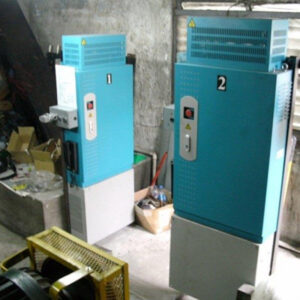جدول المحتويات
تبديلElevator Shaft Design
تصميم رمح المصعد is a crucial aspect of modern building architecture, playing a vital role in ensuring the safety and efficiency of elevator systems. As cities grow vertically and buildings rise higher, the importance of a well-thought-out elevator shaft cannot be overstated. This article delves into the key principles that govern effective elevator shaft design, highlighting its advantages and applications while encouraging readers to consider the broader implications of these structures.
One of the most important principles of elevator shaft design is ensuring structural integrity. An elevator shaft must be sturdy enough to withstand not only the weight of the elevators and their cargo but also vibrations and potential impacts. For instance, in a high-rise building, the shaft often needs to support the elevators used for transporting heavy loads, such as freight or medical supplies. Engineers typically use materials like reinforced concrete for this purpose, which provides both strength and durability.
Another critical principle revolves around safety. Elevators are designed to transport people, and their shafts must ensure that passengers are protected at all times. This includes the thoughtful placement of barriers and doors. For example, in residential buildings, the elevator shaft design often includes fire-rated doors that automatically close in case of a fire, preventing flames and smoke from traveling up the shaft. Additionally, emergency lighting and communication systems within the shaft can guide passengers safely to exits during power failures or emergencies.
In addition to safety, efficiency is a cornerstone of elevator shaft design. Elevators should be able to move smoothly and quickly while minimizing energy consumption. One effective strategy involves optimizing the size of the elevator shaft. A larger shaft may seem beneficial, allowing for more spacious elevators and easier access, but it can also lead to increased material costs and energy usage. Conversely, a shaft that is too small can hinder movement and safety. Striking a balance between these factors is essential. For example, implementing “smart” elevators that can predict usage patterns can enhance efficiency. These systems analyze traffic patterns within a building to reduce wait times and optimize battery usage.
Elevator shaft design is also influenced by the need for ventilation. Elevators generate heat during operation, which must be dissipated to maintain both gear function and passenger comfort. Adequate ventilation prevents overheating, ensuring that elevators function correctly and efficiently. For instance, some buildings incorporate ventilation shafts alongside elevators, allowing hot air to escape and ensuring a more energy-efficient environment.
The application fields of elevator shaft design extend far beyond residential buildings. Skyscrapers, hospitals, hotels, and commercial complexes all rely on optimal elevator shaft design for their operational success. In skyscrapers, for instance, the elevator shafts are often designed to serve multiple floors with express elevators that bypass certain levels, making them essential for saving time and improving access to high-rise amenities. Similarly, in hospitals, specialized elevator shafts are designed for transporting medical equipment and patients quickly and safely.
The integration of technology is becoming increasingly prevalent in elevator shaft design. With the advent of automation and smart building management systems, it is possible to monitor the performance of elevators in real time. This not only improves maintenance schedules but also enhances safety by predicting and preventing potential failures before they occur. Such advancements make elevator shaft design not just about physical structures but also about creating intelligent systems that improve building functionality.
In conclusion, elevator shaft design is a multifaceted discipline that prioritizes safety and efficiency. By understanding and applying the key principles discussed—structural integrity, safety features, efficiency optimization, ventilation needs, and technology integration—architects and engineers can create effective elevator systems for various applications. As we continue to build taller structures, the importance of elevated design becomes even more apparent, prompting us to think critically about how we manage vertical transportation in our modern world. When you consider the implications of these principles, it becomes clear that thoughtful elevator shaft design is vital to the safety and efficiency of our urban environments.


